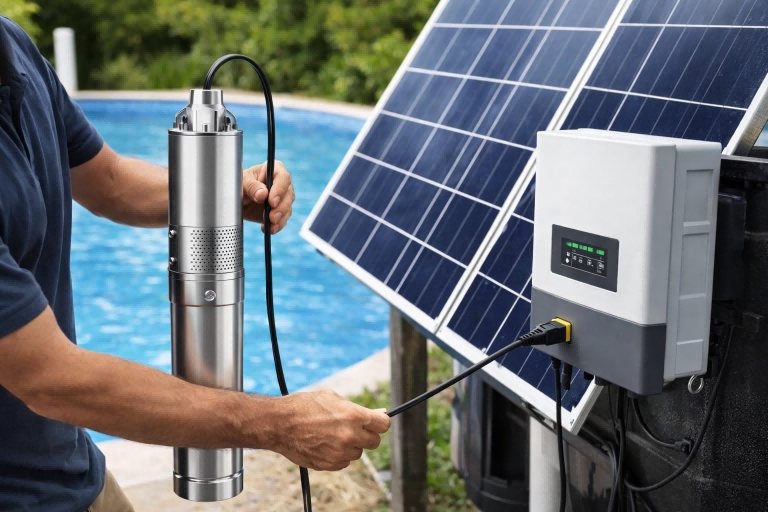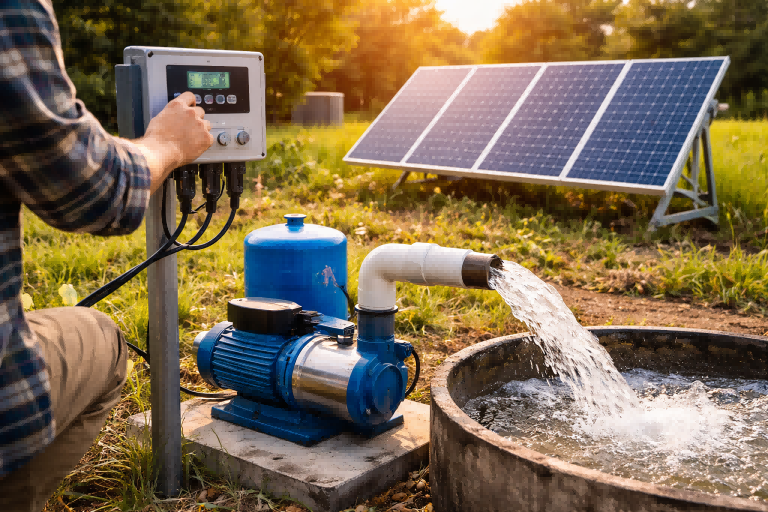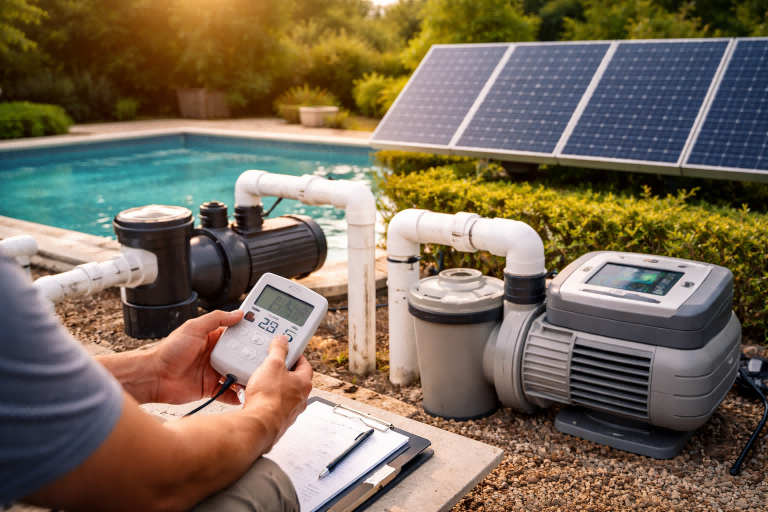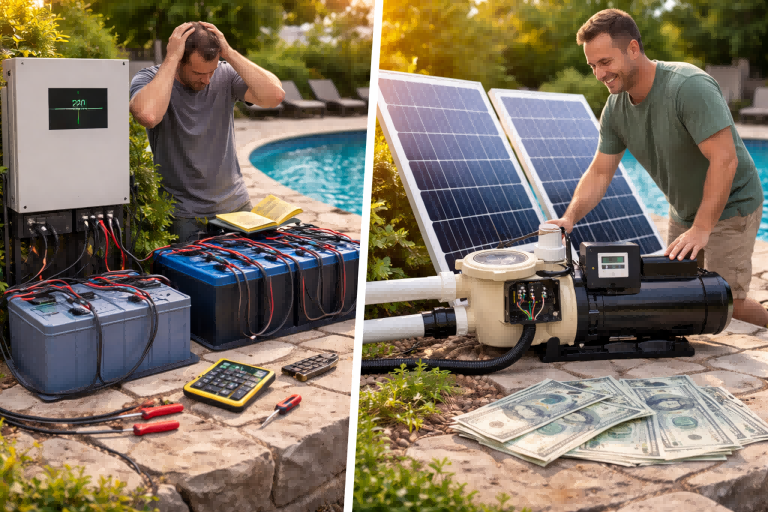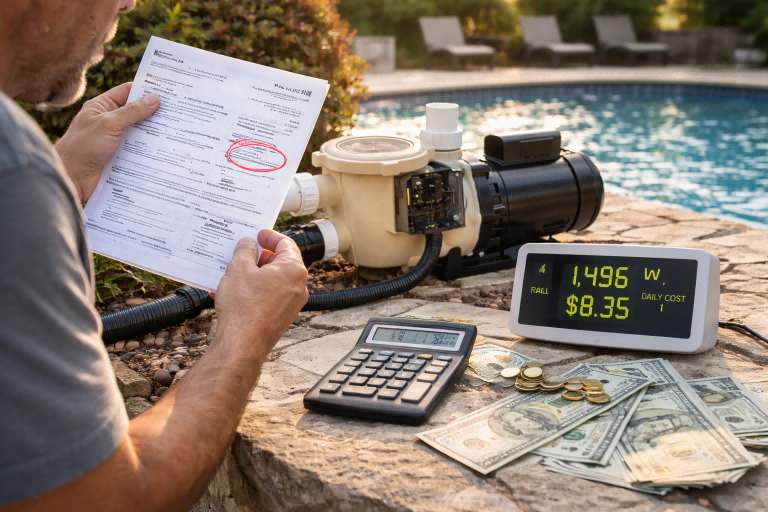Dealing with weak water pressure is frustrating.
It turns simple tasks like showering or washing dishes into a daily struggle.
An automatic booster pump solves this by intelligently increasing your water pressure.
An automatic booster pump works by using a sensor to detect low water pressure in your plumbing.
This sensor signals a motor to start, which powers an impeller to spin and push water through the pipes with greater force, instantly boosting the pressure to a preset level.
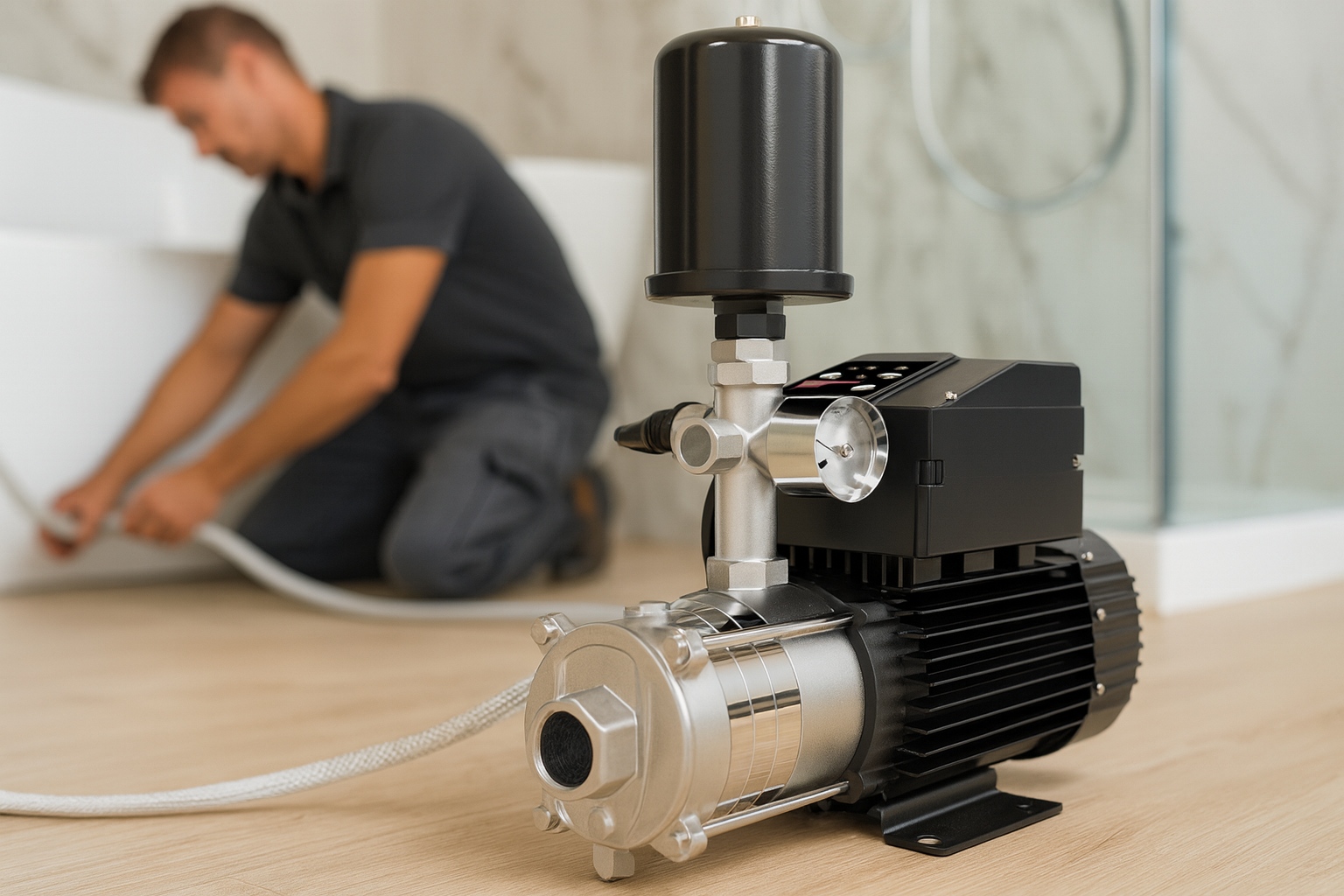
Understanding how these pumps achieve consistent, reliable pressure is key to appreciating their value.
They aren't just simple motors; they are sophisticated systems designed for efficiency, quiet operation, and long-term durability.
The real magic lies in the advanced technology that controls the motor, the high-quality materials used in its construction, and the intelligent protections that keep it running smoothly.
Let's explore the core components and smart features that make modern automatic booster pumps a vital part of any building's water system.
The Heart of the System: Core Drive Technology
Tired of fluctuating water pressure and noisy pumps?
These issues disrupt your daily life and indicate an inefficient system.
A modern pump uses advanced drive technology for a stable, silent, and powerful water supply.
The core technology combines a Permanent Magnet Synchronous Motor (PMSM) with a Variable Frequency Drive (VFD).
This pairing allows the pump to precisely adjust its speed to match water demand, ensuring constant pressure, eliminating energy waste, and operating at whisper-quiet levels.
At the center of a modern booster pump's performance is the synergy between its motor and its controller.
This isn't just about spinning a motor to move water; it's about doing it with intelligence and precision.
The use of a Permanent Magnet Synchronous Motor (PMSM) is a significant leap forward from older induction motors.
PMSMs are inherently more efficient because they use powerful magnets, reducing the electrical energy needed to create magnetic fields.
This directly translates to lower electricity bills for the end-user.
When this efficient motor is paired with a Variable Frequency Drive (VFD), the system becomes truly intelligent.
The VFD acts as the brain, constantly monitoring water pressure.
Instead of the traditional pump's binary on-off cycle, which causes pressure spikes and drops, the VFD adjusts the electrical frequency sent to the motor.
This allows the motor's speed to be finely tuned in real-time.
If you open a single faucet, the pump might run at only 30% of its capacity.
If multiple showers are running, it will ramp up smoothly to meet the demand.
This process is what delivers that perfectly constant, unwavering water pressure.
Soft Start and Soft Stop Technology
A crucial function enabled by the VFD is the "soft start" and "soft stop" feature.
Imagine a car lurching forward violently every time you press the gas.
That's how old pumps operate, slamming the system with a sudden jolt of pressure, an effect known as water hammer.
This hydraulic shock stresses pipes, joints, and fixtures, leading to leaks and failures over time.
The soft start function gradually accelerates the motor, allowing pressure to build gently.
Similarly, the soft stop function slows it down smoothly, protecting the entire plumbing system from mechanical stress and significantly extending its lifespan.
Pressure Customization and Operational Range
This precise control offers incredible flexibility.
Users aren't stuck with a single factory-set pressure.
The system allows for a wide adjustment range, typically from 20% to 95% of the pump's maximum head.
This means the pump can be perfectly calibrated for a small apartment, a large multi-story home, or even light commercial applications, all while maintaining peak efficiency.
| Feature | Benefit |
|---|---|
| PMSM Motor | Higher energy efficiency, lower operating costs. |
| VFD Controller | Precise speed control, constant water pressure. |
| Soft Start/Stop | Prevents water hammer, extends system life. |
| Pressure Adjustment | Customizable for various application needs. |
This intelligent drive technology is the foundation upon which all other features are built, transforming the simple booster pump into a highly efficient and reliable water management system.
Built to Last: Mechanical and Material Engineering
Worried that a new pump won't withstand the test of time?
Cheap materials and poor construction lead to corrosion, breakdowns, and costly replacements.
Investing in superior engineering ensures reliability and a long service life.
Excellence in engineering is defined by the quality of materials used.
Pumps built with high-grade components like AISI304 stainless steel impellers, premium silicon steel stators, and top-tier bearings from brands like NSK/C&U are designed for durability, efficiency, and quiet, long-lasting performance.
The longevity and reliability of a booster pump depend entirely on what's inside.
While the electronic controls are the brains, the mechanical components are the brawn, and their quality dictates how long the pump will perform under pressure.
A commitment to high-quality materials and precision engineering sets a premium pump apart from standard models.
The selection of each component is a deliberate choice aimed at maximizing performance and durability.
The Stator and Rotor: Core of the Motor
The stator, the stationary part of the motor, is a critical element for efficiency.
Using high-grade 600-grade silicon steel reduces electrical losses, meaning more of the input energy is converted into pumping power.
This efficiency also results in less waste heat, producing a low temperature rise (≤50K).
A cooler-running motor is a longer-lasting motor.
This is further enhanced by Class F insulation wire, which can withstand high temperatures without degrading, ensuring electrical integrity even under heavy loads.
The moving part, the rotor, utilizes an advanced ferrite magnet.
Its ability to withstand temperatures up to 150°C without demagnetization is crucial.
If a magnet weakens due to heat, motor performance drops permanently.
This high-temperature resistance guarantees the motor retains its power and efficiency throughout its operational life.
Premium Bearings and Impellers
The choice of bearings might seem like a small detail, but it has a massive impact on performance and lifespan.
Using premium bearings from world-renowned manufacturers like NSK or C&U results in quieter, smoother operation.
These bearings offer measurably higher precision, which reduces vibration and wear.
The result is a pump that runs up to 40% quieter and has a bearing lifespan that is over 10% longer than those using standard components.
This focus on reducing friction and wear is a hallmark of quality design.
At the hydraulic heart of the pump is the impeller, the component that physically moves the water.
Using AISI304 stainless steel is the gold standard.
This material offers exceptional resistance to corrosion and abrasion from minerals or small particles in the water.
Unlike cheaper plastic or brass impellers that can warp, crack, or corrode over time, a stainless steel impeller maintains its shape and integrity, ensuring consistent hydraulic performance for years.
| Component | Material/Specification | Key Advantage |
|---|---|---|
| Stator | 600-Grade Silicon Steel | Maximizes motor efficiency, reduces heat buildup. |
| Magnet | High-Temperature Ferrite | Prevents demagnetization, ensuring long-term power. |
| Bearings | NSK/C&U Brand | Quieter operation, reduced friction, and longer life. |
| Impeller | AISI304 Stainless Steel | Superior corrosion resistance and durability. |
These engineering choices demonstrate a philosophy where no component is overlooked.
Each part is selected not for its cost, but for its contribution to a robust, efficient, and exceptionally durable final product.
The Brains of the Operation: Uncompromising Electronic Reliability
Is your equipment failing due to moisture or dust?
Electronics in damp environments are prone to short circuits and corrosion, causing premature failure.
Protecting these sensitive components is essential for long-term reliability.
The most reliable pumps use a sealed PCB (Printed Circuit Board) design.
The main controller is completely encased in a waterproof potting compound, creating an IP67-rated barrier against moisture, dust, and vibration.
This dramatically extends the life of the pump's electronics.
In the demanding environment where pumps operate—often in damp basements, humid utility closets, or exposed outdoor areas—the electronic controller is the most vulnerable component.
Moisture, condensation, dust, and even insects can find their way onto a standard circuit board, leading to short circuits, corrosion, and catastrophic failure.
The single most effective strategy to combat this is to completely isolate the electronics from the environment.
This is achieved through a process known as potting.
The entire Printed Circuit Board (PCB), which houses the microprocessor and all other sensitive electronic components, is placed in a casing and then filled with a durable, non-conductive epoxy or polyurethane resin.
This compound cures to form a solid, impenetrable block around the electronics.
The Benefits of a Potted Controller
This method provides several non-negotiable advantages for a product designed for a long service life.
- Total Waterproofing: The seal is absolute. It creates a 100% waterproof and dustproof barrier, typically achieving an IP67 protection rating. An IP67 rating means the core electronics can be submerged in up to one meter of water for 30 minutes without damage. For a pump, this means it is completely impervious to splashes, high humidity, and condensation, which are common causes of failure.
- Vibration and Shock Resistance: The solid potting compound also encases components, preventing them from being damaged by the micro-vibrations inherent in motor operation. This physical reinforcement protects solder joints and delicate parts from fatigue and failure over time.
- Enhanced Thermal Dissipation: While it may seem counterintuitive, the potting material can also help in evenly distributing heat away from hot-running components on the board, preventing localized hot spots and contributing to a more stable operating temperature.
A Guarantee of Longevity
By preventing an estimated 95% of failures related to environmental factors like moisture, this design choice is a direct investment in the product's longevity.
It's a feature that might not be visible from the outside, but it is one of the most critical factors in a pump's long-term reliability.
This protective shield is projected to extend the lifespan of the controller by an additional 3 to 5 years compared to unsealed boards.
It transforms the pump's electronic brain from a vulnerable point of failure into a fortress of reliability, ensuring the user can depend on its intelligent functions for the entire life of the product.
The Digital Guardian: A Comprehensive Protection System
Afraid of your pump burning out from running dry?
Unexpected issues like power surges, leaks, or water shortages can destroy a pump motor.
An intelligent system needs to protect itself from these common threats.
A truly automatic pump features a multi-layered safety system.
It actively monitors for electrical faults, overheating, and dry-running conditions.
This "digital guardian" can automatically shut down to prevent damage and execute intelligent recovery attempts, ensuring both safety and longevity.
A modern booster pump is far more than just a motor; it's a smart device equipped with a sophisticated self-preservation system.
This system acts as a vigilant guardian, constantly monitoring a wide array of operational parameters to protect the unit from damage.
Advanced pumps feature a comprehensive suite of up to 14 distinct protection functions, which can be broadly categorized into electrical, thermal, and system-level safeguards.
This intelligent oversight is what ensures the pump can operate safely and autonomously for years without intervention.
Electrical and Thermal Protections
The pump's first line of defense is against unstable power grids and internal electrical faults.
- Voltage Protection: It constantly monitors the input voltage. If it's too high or too low (a common issue in areas with poor electrical infrastructure), the pump will shut down to protect its sensitive electronics.
- Overcurrent & Stall Protection: If the motor draws too much current, which can happen if the impeller is jammed or the motor is stalled, the system immediately cuts power to prevent the motor windings from burning out.
- Overheating Protection: Multiple sensors monitor the temperature of both the driver board (PCB) and the water itself. If either exceeds a safe threshold, the pump will stop to cool down, preventing heat-related damage.
Intelligent System and Sensor Protections
Beyond electrical safety, the pump protects itself from hydraulic and environmental issues.
The most critical of these is Dry Run Protection.
Running a pump without water will destroy it in minutes due to friction and overheating.
This pump uses a smart, multi-stage algorithm to handle this common problem.
Dry Run Recovery Algorithm
- 1st Detection: The pump will attempt to self-prime for 360 seconds. If it fails, it enters a 5-minute sleep period before trying again.
- 2nd - 4th Detections: If water is still not found, the sleep period extends to 2 hours between attempts. This conserves energy while still checking periodically.
- 5th+ Detections: The sleep period extends further to 6 hours. This long-term strategy prevents the pump from cycling uselessly while ensuring it will restart automatically once the water supply is restored.
Other key system protections include:
- Antifreeze Protection: In cold climates, it will periodically run the motor for a few seconds to prevent water inside the pump head from freezing and cracking the casing.
- Pipeline Leak Warning: The system is smart enough to detect a small, persistent drop in pressure that indicates a leak in the plumbing, alerting the user to a potential problem.
- Sensor Failure Warnings: It performs self-diagnostics. If a critical sensor (like pressure or temperature) fails, it will display a specific error code, making troubleshooting fast and accurate.
This comprehensive safety net ensures that the pump is not just powerful and efficient, but also exceptionally resilient and reliable.
Effortless Control: User Interface and Monitoring
Think smart pumps are too complicated to use?
Complex controls and confusing displays can make it difficult to set up and monitor your system.
A user-friendly design should provide powerful control without the headache.
The best pumps feature a simple, intuitive interface.
With just a few buttons, you can easily turn the unit on or off and adjust pressure.
A clear display with LED indicators gives you at-a-glance status updates and access to real-time performance data.
Despite the immense complexity of the technology running inside, a modern booster pump is designed for straightforward, intuitive operation.
The goal is to give the user complete control and deep insight into the pump's performance without requiring an engineering degree.
This is achieved through a thoughtfully designed control panel and, in some models, advanced remote monitoring capabilities.
The standard interface typically features a simple 5-button layout and a clear digital screen complemented by 7 distinct LED status indicators.
Simple, Direct Controls
The day-to-day operation is incredibly simple.
- Power On/Off: A short press of the power button starts or stops the pump.
- Pressure Adjustment: The UP and DOWN buttons allow the user to increase or decrease the target water pressure in small, precise increments, dialing in the perfect setting for their home.
- Factory Reset: If settings need to be reverted, a simple long press of the power button for 3 seconds restores the pump to its default configuration.
This simplicity ensures that anyone can operate the pump and adjust its core function without needing to navigate complex menus.
Deep-Dive Real-Time Data
For installers or technically-inclined users who want more information, the system provides a wealth of real-time data.
A long press of a mode button cycles the digital display through six critical operating parameters, offering a live look under the hood.
| Live Data Display Cycle | Code Displayed | Data Point |
|---|---|---|
A.xx |
Real-time water temperature | |
P.xxx |
Real-time power consumption (Watts) | |
xxxx |
Live motor speed (RPM) | |
U.xxx |
Current input voltage (Volts) | |
t.xx |
PCB controller temperature | |
(Pressure) |
Recovery pressure setting |
This information is invaluable for diagnosing potential issues with the wider plumbing or electrical system.
For example, a low voltage reading (U.xxx) could indicate a problem with the building's wiring, while unusually high power consumption (P.xxx) might suggest a blockage or a major leak.
At-a-Glance Status Indicators
The LED indicators provide immediate visual feedback on the pump's status, so you know what it's doing without having to read the screen.
Dedicated lights show if the pump is in "Constant Pressure Mode," if a "Pipeline Leak" has been detected, if there's an "Input Voltage Fault," or if it has entered "Water Shortage" protection mode.
There is even a multi-level indicator that shows the current power output, giving a quick visual cue of how hard the pump is working.
This combination of simple controls, deep data access, and clear indicators makes the pump both easy to use and easy to manage.
Conclusion
An automatic booster pump intelligently combines an efficient motor, durable materials, and a smart, protective control system to deliver constant, reliable water pressure while ensuring its own longevity.
FAQs
1. What is the main purpose of a booster pump?
A booster pump's main purpose is to increase low water pressure and flow in a plumbing system, ensuring adequate and consistent water supply to all outlets.
2. Where should a booster pump be installed?
A booster pump is typically installed on the main water line after the water meter or storage tank, before the line branches out to different parts of the building.
3. Do booster pumps use a lot of electricity?
Modern booster pumps with Variable Frequency Drives (VFDs) are very energy-efficient, using up to 50% less electricity than traditional pumps by only running at the speed needed.
4. How long does a booster pump last?
A well-maintained, high-quality booster pump can last for 8 to 15 years. Longevity depends on the quality of its components, materials, and protective features.
5. Are water booster pumps noisy?
Advanced booster pumps using permanent magnet motors and VFDs are exceptionally quiet, often operating below 50dB, which is quieter than a normal conversation or a library.
6. Can a booster pump run dry?
A pump should never run dry, as it can cause rapid damage. Intelligent pumps have built-in dry-run protection that automatically shuts them off when no water is detected.
7. Does a booster pump increase water bills?
A booster pump does not use water, so it will not increase your water bill. However, by fixing leaks to maintain pressure, it can indirectly help you identify and save water.
8. What pressure should my booster pump be set at?
For most homes, a pressure setting between 40 to 60 PSI is ideal. The exact pressure can be adjusted on the pump to suit your personal preference and system requirements.


